Comprehensive Guide : Types of Lithium batteries & How to Choose the Right one
Today, lithium batteries are more widely used than ever. Your cell phone, laptop, cordless power tools, and even electric cars all include them. Although they all use lithium batteries, not all of these electronics use the same kind of lithium batteries. We’ll examine the advantages of each of the six major categories of lithium batteries in more detail, as well as the ideal uses for each.
What are lithium batteries?
Lithium batteries use lithium ions to store energy by creating an electrical potential difference between the battery’s negative and positive poles. The two sides of the battery are separated by an insulating layer known as a “separator,” which keeps the electrons out while letting the lithium ions pass through.
Lithium ions travel through the separator from the battery’s positive side to its negative side during the charging process. As you drain the battery, the ions move in the other direction.
Various lithium battery designs use various active components and chemical processes to store energy. Each type of lithium battery has advantages and disadvantages as well as applications for which it is most suitable.
Types of Lithium Batteries
The names of the various varieties of lithium batteries are derived from their active components. Based on the molecular symbols for the active ingredients, the lithium iron phosphate battery, generally known as LiFePO4, is the first type we shall examine. However, many individuals abbreviate the name even more, using LFP.
Lithium Iron Phosphate
In lithium iron phosphate (LFP) batteries, phosphate is employed as the cathode material and a graphitic carbon electrode as the anode. LFP batteries have a long life cycle, high thermal stability, and electrochemical performance.
Uses
As li phosphate battery cells have a nominal voltage of 3.2 volts, putting four of them in series creates a battery with a 12.8 volt capacity. Because of this, lead-acid deep-cycle batteries are typically replaced with LFP batteries.
Benefits
Lithium iron phosphate batteries are one of the most common choices for applications requiring a lot of power because of their many advantages. Nevertheless, longevity, safety, and toughness are the main advantages.
The lifespan rating of LFP batteries is typically 2,000 cycles or more. Unlike lead-acid batteries, the longevity of LFP batteries is not significantly impacted by the depth of discharge. The majority of LFP manufacturers rate their batteries at a depth of discharge of 80%, and some even let 100% discharge without the battery being harmed.
Lithium-iron phosphate batteries are naturally safe and extremely stable due to the low resistance of the materials used in their construction. Even when fully charged, LFP batteries are among the safest lithium battery solutions because of their low thermal runaway threshold, which is 518 degrees Fahrenheit.
Lithium Cobalt Oxide
Lithium cobalt oxide (LCO) batteries offer a high specific energy despite having a low specific power. This shows that they can generate electricity for an extended period of time but suffer under heavy loads.
Uses
LCO batteries are often used in small, portable gadgets including cameras, tablets, computers, and phones. However, due to the expensive cost of cobalt and worries about safety, they are losing popularity to other varieties of lithium batteries.
Benefits
LCO batteries’ high specific energy is their main advantage. This enables them to deliver electricity for a considerable amount of time in low-load situations.
Lithium Manganese Oxide
In lithium manganese oxide (LMO) batteries, lithium manganese oxide is employed as the cathode material. With the use of this chemical, a three-dimensional structure is created that improves thermal stability and security while also improving ion flow, lowering internal resistance, and handling current more effectively.
Uses
LMO batteries are extensively used in portable power tools, medical equipment, and some hybrid and electric vehicles.
Benefits
The specific power of LMO batteries is great, and they charge quickly. In comparison to LCO batteries, they can therefore deliver higher current. Moreover, compared to LCO batteries, they have improved thermal stability, allowing for safer operation at higher temperatures.
The adaptability of LMO batteries is another advantage. LMO batteries can be tuned to accommodate high-load or long-life applications by adjusting the internal chemistry.
Lithium, Nickel, Manganese, Cobalt Oxide
Lithium nickel manga cobalt oxide (NMC) batteries combine the benefits of the three main materials used in the cathode: nickel, manganese, and cobalt. Nickel is unstable despite having a high specific energy on its own. Manganese is quite stable yet has a low specific energy. A chemical compound with a high specific energy is produced when these two things are combined.
Uses
NMC batteries are used in electronic powertrains for e-bikes, scooters, and some electric vehicles, just like LMO batteries are.
Benefits
High energy density and a longer lifecycle at a lower price than cobalt-based batteries are advantages of NMC batteries. They are generally safer since they have greater thermal stability than LCO batteries.
Lithium Nickel Cobalt Aluminium Oxide
Batteries made of lithium, nickel, cobalt, and aluminium oxide (NCA) have a long lifespan, good specific power, and high specific energy. They might therefore provide a significant amount of current for a long period of time.
Uses
In the market for electric vehicles, NCA batteries are preferred because of their long battery life and capacity to operate in high-load applications. Tesla favours using NCA batteries in particular.
Benefits
High energy and a respectable lifespan are two of NCA batteries’ major advantages.
Lithium Titanate
Every of the previous lithium battery kinds that we have looked at have a different cathode material’s chemical makeup. Batteries made of lithium titanate (LTO) substitute LMO or NMC for graphite as the cathode ingredient.
The end result is a battery that charges faster than any other form of lithium battery and has a very long lifespan.
Uses
LTO batteries are used in numerous applications. Only a few examples of use cases include electric vehicles and charging stations, uninterruptible power sources, wind and solar energy storage, solar street lights, telecommunications systems, and aerospace and military gear.
Benefits
Fast charging, an incredibly wide operating temperature range, a long lifespan, and exceptional safety thanks to their stability are just a few of the advantages that LTO batteries have to offer.
Li-ion Cell Types
Batteries come in a variety of shapes and sizes, just like the equipment and gadgets they power. Battery cells come in four different shapes: cylindrical, button or coin, prismatic, and polymer or pouch. Although there are several sizes and chemistries of each of these cell formats, we will concentrate on the Lithium-ion (Li-ion) rechargeable varieties.
Button Cells
Button cells are often referred to as coin cells due to their compact, rounded shape, which resembles a coin or button. They come in regular sizes based on their diameter and thickness and are housed in a metal container (can). A CR2032 battery, for instance, has a 20mm diameter and 3.2mm thickness. Button cells are typically primary (non-rechargeable) cells that are utilised in gadgets and applications that need a small battery. These kinds of cells frequently supply energy for backup memory in gadgets that don’t require a lot of storage space. The tiny size of the button cell makes it perfect for tiny wearable or portable devices, including watches, hearing aids, medical wearable implants, laser pointers, and remote starters.
Prismatic Cells
Early in the 1990s, prismatic cells were discovered. These cells come in a sturdy, weld-together aluminium or steel “metal can” container. Its strong exterior meets the need for a thin cell. Only a few common sizes are offered on the market, and they are identified by their thickness, width, and length. A typical 103450, for instance, has dimensions of 10mm thick, 34mm broad, and 50mm long. The prismatic cell’s low-profile form enhances volume utilisation inside the battery pack, however making these cells can be expensive. Moreover, these cells have a shorter cycle life than cylindrical cells, are less effective at managing heat, and may bulge. Li-prismatic batteries can now be obtained in greater sizes for usage in hybrid and electric cars as well as thin profile handheld devices like laptops, tablets, and smartphones.
Polymer Cells
About 1995, polymer, or pouch cells, were introduced to the battery market. They are similar to prismatic cells but lack the outer hard shell. The electrolyte flexibility of these cells, which are laminated in a foil pouch, makes it simple to produce thin profile sizes in a variety of unique forms, cuts, and curves. Pouch cells provide the best energy density and packaging efficiency, but they have a propensity to swell, making them more prone to penetration. Thin computers, contemporary tablets, and mobile phones all have thin profiles and use normal size Li-polymer batteries frequently. They are also widely used in portable devices like drones and toy electronics that need high load currents. While large size polymer cells are employed in Energy Storage System (ESS) applications as well as electric and hybrid cars, curved polymer cells are typically used in wearable consumer and medical products.
Cylindrical Cells
The first thing that may come to mind when one thinks of a battery is a group of cylindrical cells, like an AA battery. For all cell types, primary (non-rechargeable) and secondary (rechargeable), across different chemistries including lithium-ion (Li-ion), and even some Lead Acid systems, the cylindrical cell is the most often utilised shape. The diameter and length of these cells, which are housed in a metal container, are used to give them names. The most popular sizes for Li-ion rechargeable batteries are the 18650 (18mm diameter, 65mm length), 26650 (26mm diameter, 65mm length), and 21700 (21mm diameter, 70mm length).
Cylinders may be neatly packed, have a sturdy mechanical form, and are symmetrical. Its form helps decrease tension and internal pressure concentration. Li-ion cylindrical cells offer a higher energy density than flat Li-ion cells when they are put together in a battery pack. The cylindrical cell is the most popular option for multi-cell combinations that are frequently utilised in applications like as medical, military, consumer, industrial, EV, and more. It is incredibly adaptable.
Li-ion Cell Size
Although there are many different types of cylindrical cells, the 18650 format has historically been the most often used for LCO, NCA, and NMC battery cells. In addition, Panasonic and Tesla collaborated to develop the special 21700 cell format for a new EV battery.
The 18650 cell’s size can be increased by a few millimetres, which increases the volume of the battery’s active material by 50%. The majority of top NMC cell manufacturers now support this cell size. As a result, the two most popular formats for NMC chemistry are 18650 and 21700. With the standardisation, it is guaranteed to be possible to locate an alternative cell with comparable performance if you choose to build an NMC battery pack using an 18650 or 21700 cell.
Industry analysts estimate that in 2020, more than 2 billion cells in the 21700 format were shipped, a 25% increase from the year before. According to some projections, these cell types also made up 24% of all cylindrical batteries supplied in 2020. It is uncommon to pair the 26650 cell with NMC chemistry. In recent years, as lithium-polymer cells have grown in popularity, smaller prismatic NMC forms, like the 103450 (10 34 50 mm), have lost appeal.
The 18650 and 26650 formats are popular for LFP cells, and both are frequently provided by top LFP cell manufacturers. This makes it possible to source LFP cells for a battery pack in two different ways from competing cell producers. The LFP cell chemistry has generally been the only option for the 26650 format. Over the past several years, large prismatic LFP cells in the 50- to 100-Ah range have become more and more common.
Electric cars and industrial machinery like forklifts frequently use larger LFP prismatic forms. These batteries require very high power ratings and are categorised as medium- or large-format batteries. As there aren’t many large-format prismatic LFP cell standards, each cell chosen for a battery pack will come from a single supplier.
Do all battery types utilise lithium?
Non-lithium batteries exist, too. Since they are relatively new, lithium batteries are replacing older battery technologies with increasing frequency.
Lead-acid deep-cycle batteries have been a longtime norm for batteries, notably in motor vehicles. In spite of lithium’s recent rapid market growth, lead-acid batteries are still the most popular option for gas-powered cars due to their low initial cost.
Alkaline batteries are also the most typical kinds of off-the-shelf batteries found in retailers. The majority of AA and AAA batteries in use today are alkaline batteries, which use a chemical reaction involving zinc and manganese dioxide to store energy.
The majority of rechargeable batteries were nickel-cadmium before rechargeable lithium batteries became widespread (NiCad). Nickel oxide hydroxide and metallic cadmium are used as electrode materials in NiCad batteries. NiCad batteries are waning in popularity as lithium batteries take over the market for rechargeable batteries, while they are still widely used.
Which Lithium Battery Type is the Most Popular?
Cell phones, laptops, tablets, digital cameras, and several other consumer electronics employ lithium-cobalt oxide (LCO) batteries. So, it should come as no surprise that they are the most popular lithium battery kind.
Choose the Appropriate Lithium Battery for Your Task
As you can see, there are numerous variations on the lithium battery. Each one has advantages and disadvantages, as well as different applications where they thrive. Which lithium battery type is appropriate for you depends on your application, price, safety tolerance, and power needs. If you want to know li ion battery price in India for your next project you can connect with us at support.india@tiitan.com.



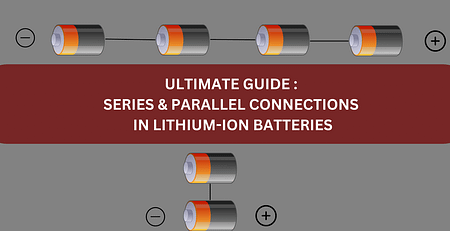
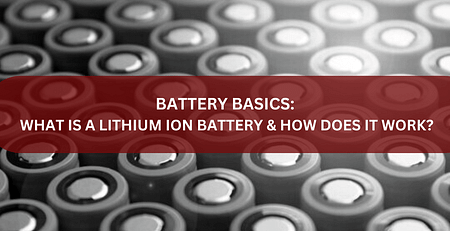
![[DIY] How To Make 10000mAh Power Bank](https://ml1wjsj0hdca.i.optimole.com/w:450/h:231/q:mauto/rt:fill/g:ce/f:avif/https://tiitan.com/wp-content/uploads/2023/02/blog-cover-power-bank.jpg)

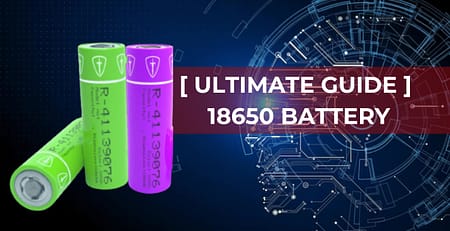
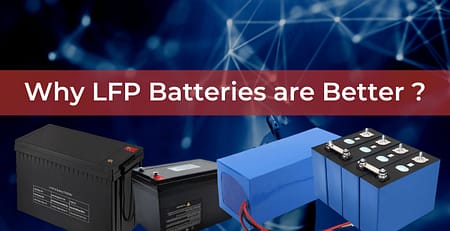
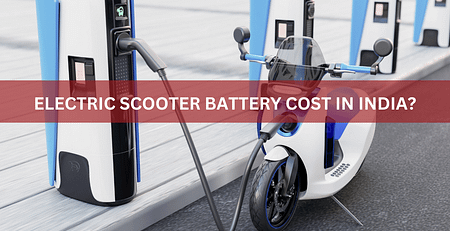
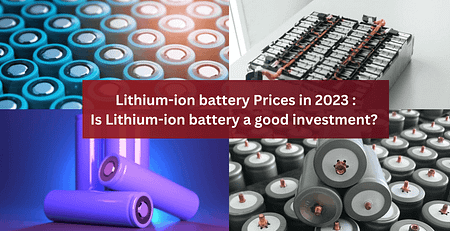
Leave a Reply